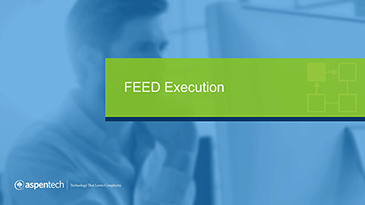With the U.S. and the entire world continuing to navigate these uncertain times, EPCs will want to look at every available opportunity to win more work and generate consistent profits. At the same time, their identifying and understanding obstacles to success could help them be prepared or know what to look for in a digital solutions provider—should they decide to go that route.
Certainly, executing Front-End Engineering Design (FEED) projects has become more challenging and complicated. Multiple disciplines typically work simultaneously, sharing documents across offices and making it difficult to keep up with the inevitable changes, which often lead to cost overruns, project delays and more.
As I see it, here are five of the biggest challenges facing EPCs today:
1. Quality of Deliverables
One of the most time-consuming and error-prone tasks during the engineering phase of a project is the creation of FEED deliverables. Typically, thousands of equipment datasheets, equipment lists, calculation sheets and other deliverables are required.
Today's technology enables sharing of information no matter how many miles are separating team members. Data is entered once, then maintained in a single, up-to-date central repository. A server-based tool enables global collaboration and consistency across all the deliverables. If an edit is made to a pump label in New York, the change is automatically updated in Hong Kong, London or for anywhere anyone with proper access is located. Using a common database means referential integrity of data. Data does not have to be transferred manually from one deliverable to another.
Integration plays a critical role in successfully producing high quality deliverables; it does for the other four factors as well.
2. Collaboration
A tremendous amount of collaboration occurs on a typical project between technology licensors, multiple EPC firms, engineers from many disciplines, estimators, project managers, owners, subcontractors, consultants and regulators. The typical challenge is that much of this collaboration is happening through brute force and is rife with problems and limitations. Emailing spreadsheets that are soon out of date, conference calls where key people are missing due to conflicts, and changes in scope or schedule that are not distributed in a timely manner result in thousands of wasted work hours every year.
With a huge number of people now working remotely full- or part-time, knowing how to collaborate effectively across offices and geographic locations has never been so important. In fact, according to Flexjobs, 4.7 million people were already working remotely before the pandemic. One report says that number has more than doubled since the onset of COVID.
Many businesses have already adopted a range of web tools that make collaboration as easy 1,500 miles way as it is two offices away. These digital technologies, which include videoconferencing, teleconferencing, digital whiteboarding and other remote solutions, enables uninterrupted and fully secure collaboration and communication across work sites and locations.
For example, software might enable you to pull up a data sheet at your location in the U.S., with data displayed in imperial units. A colleague based in Tokyo, meanwhile, pulls up the same sheet with the same data (but it’s showing in metric units, customized according to the user’s preference). Changes to the sheet made from one location show up instantaneously across all locations in whatever units a user has selected.
3. Schedule Tightening
Digital technology generally enables users to do things faster without the need to have to keep verifying everything related to the project. For instance, if project X initially had a 100-day timeline to complete the project. After taking a number of variables into consideration, the software automatically cut the schedule down to 80 days (a 20% reduction in the number of days allocated for the project timeline).
When changes to the design occur, the deliverables can be updated without manual data entry. This can save you hundreds, or thousands, of hours and help you avoid costly mistakes that can occur when entering data manually.
4. Cost Savings
When changes in the project’s design occur, deliverables can be updated without manually entering data. This can save hundreds or thousands of hours and help avoid costly mistakes that can occur when entering data manually. Together, these productivity enhancements can significantly improve quality and profitability on lump-sum projects.
5. Time to Market
A shortened project schedule results in products getting to market sooner, which is especially attractive to owner/operators.
EPCs can achieve a huge competitive advantage by importing process data packages for licensed technologies faster and then propagating that data across the project deliverables. Capture process technologies and best practice designs in reusable templates, then apply them for significant time savings in future projects. Also, users can develop modules from the past highly successful projects and reuse them in new projects.
While EPCs undoubtedly face a number of other challenges as well, these are my top five based on my experiences and what I’ve seen in the marketplace.
To see how your organization can streamline the FEED process, and improve productivity and speed of execution, view our on demand webinar with experts from AspenTech and ExiEx.





Leave A Comment